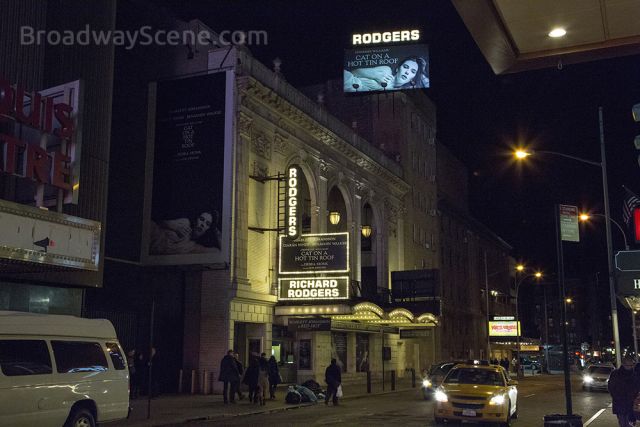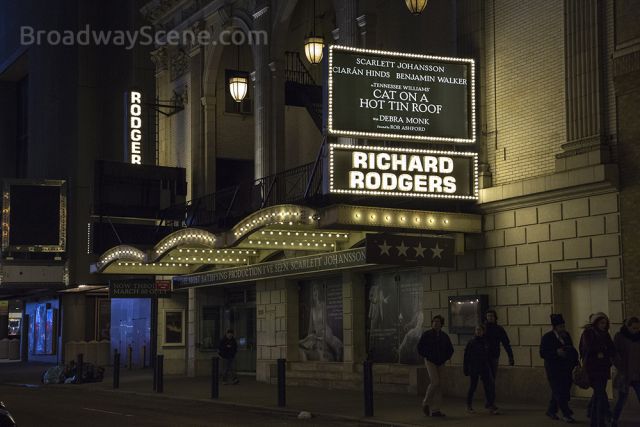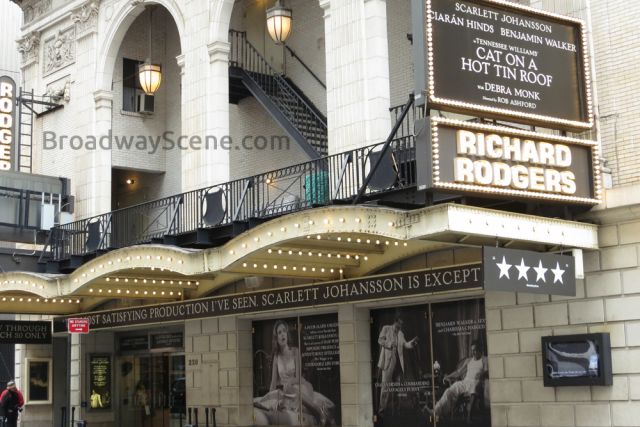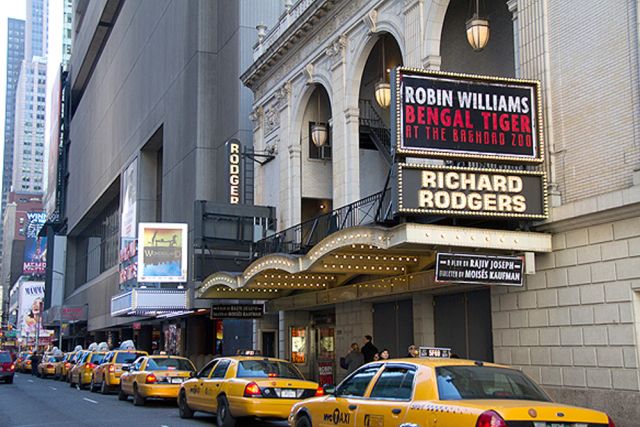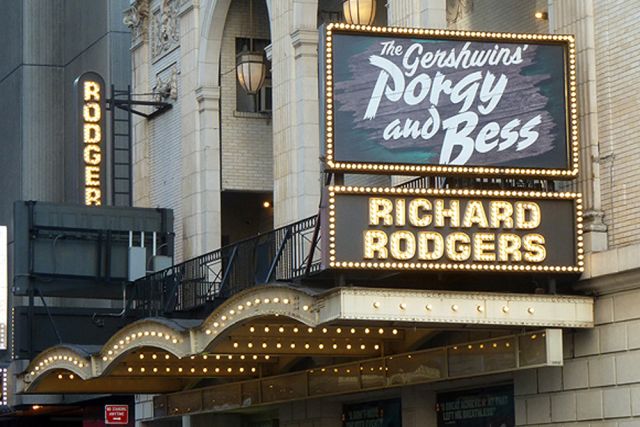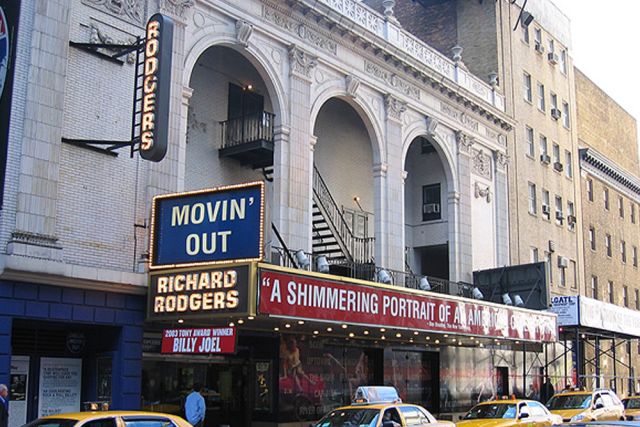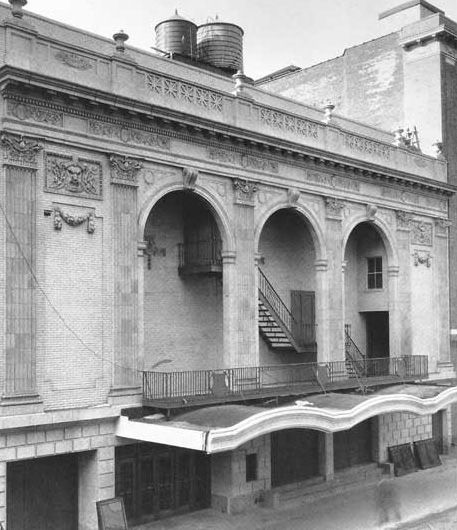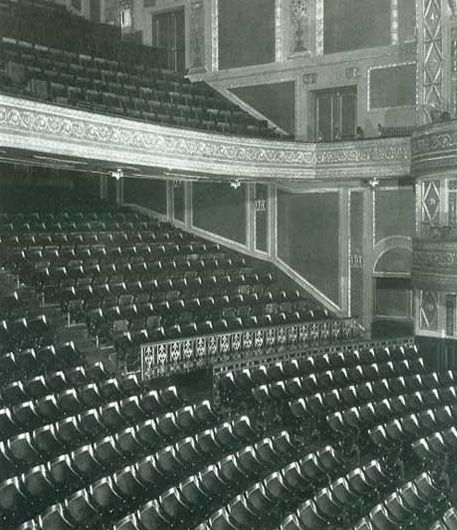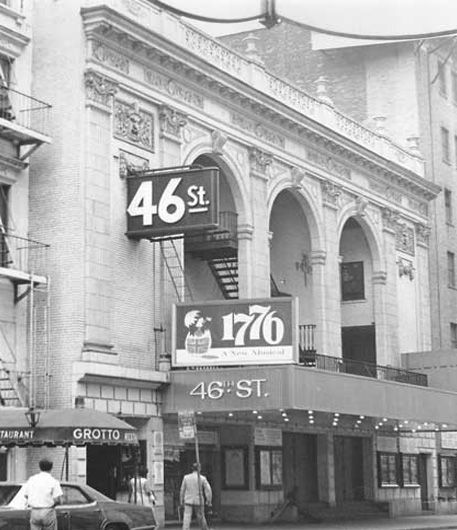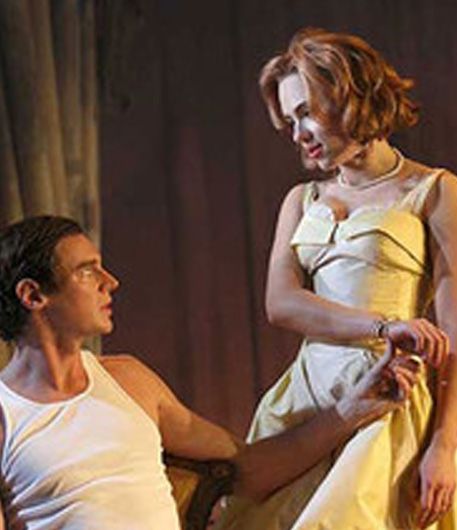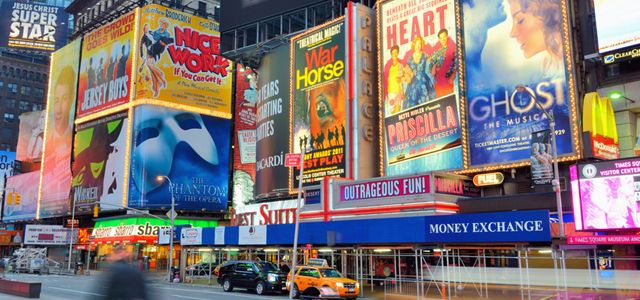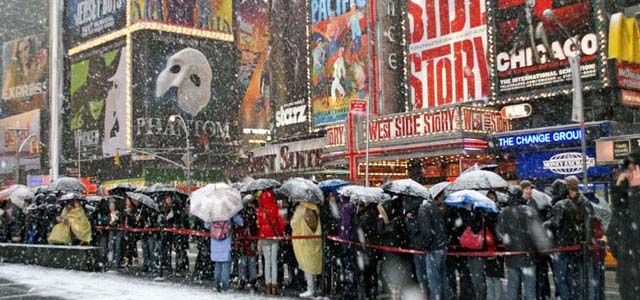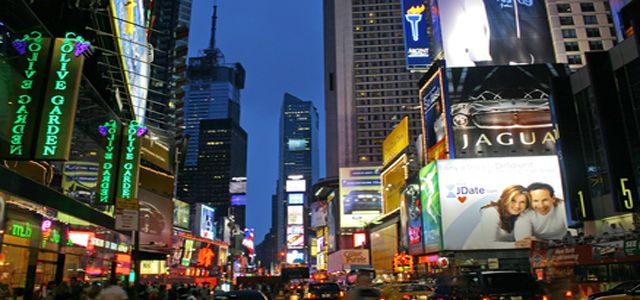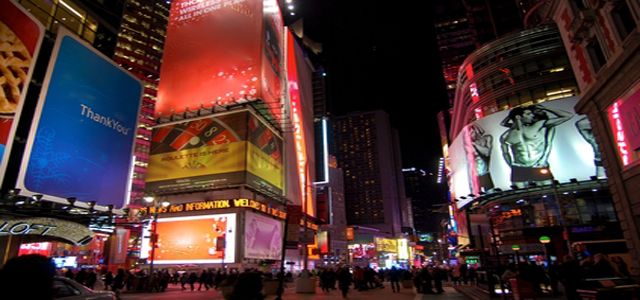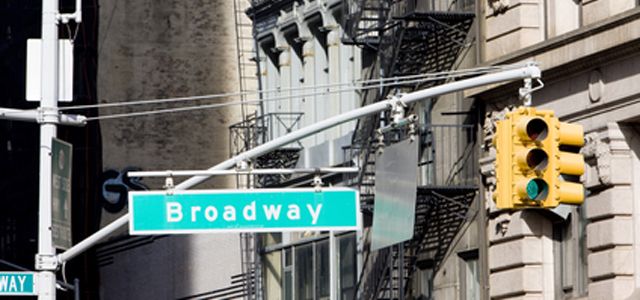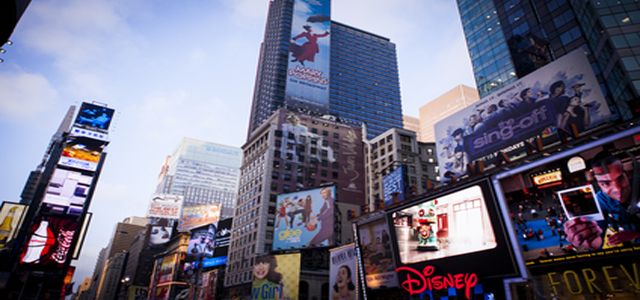The Richard Rodgers Theatre
In 1924, the Richard Rodgers Theatre originally opened as the 46th Street Theatre. The Nederlanders bought and restored the theatre in 1982. In 1990, it was rechristened to honor the celebrated composer of numerous Broadway hits, Richard Rodgers.
Significant Productions
The 46th Street Theatre opened on Christmas Eve 1924 with the Greenwich Village Follies, but it was a short run for this initial venture. In its early years, the theatre followed a procedure of only staging shows that had played in other venues first, and these shows would often be interrupted temporarily by other shows that the theatre booked. For instance, in February 1925, the long-running comedy Is Zat So? transferred from the 39th Street Theatre and ran until the middle of December. On Christmas Eve, a new version of the Greenwich Village Follies opened and stayed until March, followed by the reopening of Is Zat So? on March 15, 1926.
In the 1940s, Ethel Merman starred in Cole Porter’s Panama Hattie. A few other hugely successful shows were Dark of the Moon, Finian’s Rainbow, and One Touch of Venus featuring Mary Martin. The 1950s began with Morton Gould and Dorothy Fields’s Arms and the Girl with Nanette Fabray, Pearl Bailey and Georges Guetary, which was a musical version of the play The Pursuit of Happiness. In 1954, the brilliant Audrey Hepburn gave a mesmerizing performance in Ondine, for which she won a Tony Award.
Productions of note in the 1960s include I Do! I Do! featuring Mary Martin and Robert Preston and the long-running musical 1776. The 1970s began auspiciously with Ruby Keeler, Patsy Kelly, Helen Gallagher, Bobby Van, and Jack Gilford starring in No, No, Nanette. This was followed by other noteworthy shows including Virginia Capers in Raisin, a musical adaptation of the play A Raisin in the Sun for which Capers won a Tony and Do You Turn Somersaults? featuring Mary Martin and Anthony Quayle. Other important productions at the Richard Rodgers include The Merchant of Venice starring Dustin Hoffman, and August Wilson’s Pulitzer Prize play Fences featuring James Earl Jones.
A New Seating Plan
The Richard Rodgers Theatre was constructed by the Chanin Brothers. It was the first theatre to present the Chanin’s ‘democratic’ seating proposal. In most of the earlier Broadway theatres, patrons seated in the less expensive balcony and mezzanine areas used different entrances from theatregoers who were seated in the more costly orchestra seats. Instead, with the Chanin’s plan, everyone used the same entrance and stairs inside the house went up to the higher seating sections.
Architect Herbert J. Krapp designed the theatre, and he came up with a new idea to. Instead of constructing the orchestra level in the same style of other theatres, he had the seats angle upward so that patrons in the back of the orchestra had a perfect view of the stage. Basically, the back section of the orchestra was essentially as high as a mezzanine, and guests in that section had to climb stairs to get to their seats in the orchestra. In 2006, the theatre was renovated and currently serves as home to The Richard Rodgers Gallery, displaying collectables from Rodgers’s fascinating, long career.
Top-Notch Musical Theatre Venue
The Richard Rodgers Theatre has been home to numerous popular shows, including Anything Goes, Damn Yankees, Nine, Movin’ Out, Guys and Dolls, How To Succeed in Business Without Really Trying, Chicago, Cat on a Hot Tin Roof, and Jekyll and Hyde. With a seating capacity of 1,319 seats, the Richard Rodgers, which is one of the Nederlander’s nine Broadway theatres, is a large theatre. Today, it lives on as one the most superior musical theatre venues on Broadway.



